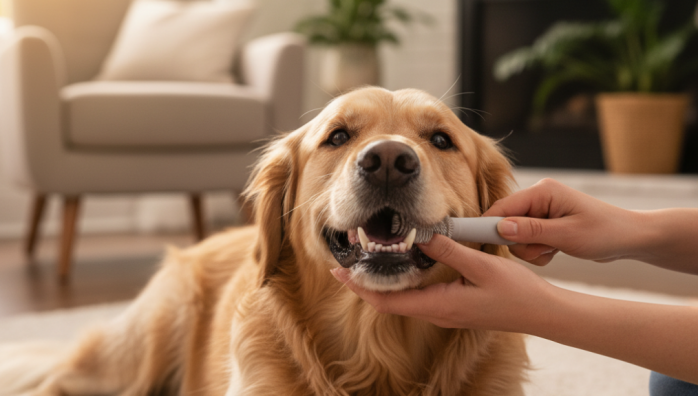Daily Tooth Brushing for Dogs and Cats
by admin in Pet Care Basics 17 - Last Update November 14, 2025

I'll be honest, for years I thought 'doggie breath' was just a quirky, unavoidable part of having a dog. I’d chuckle about it and buy breath-freshening treats, thinking I was tackling the problem. It wasn't until a routine vet visit with my senior cat, Leo, that I had my big wake-up call. The vet pointed out significant tartar buildup and inflamed gums, explaining it wasn't just a cosmetic issue—it was painful and could lead to serious health problems. That was the day I realized I had been neglecting one of the most crucial aspects of my pets' wellness.
Why daily brushing became my non-negotiable routine
That conversation with the vet really stuck with me. Learning that bacteria from dental disease can enter the bloodstream and affect organs like the heart, kidneys, and liver was terrifying. I felt a pang of guilt for not knowing sooner. I decided then and there that I had to do better for both my dog and my cat. It wasn't about perfect, pearly-white teeth; it was about preventing pain and promoting their long-term health. The vet assured me that daily brushing is the gold standard, far more effective than any chew or water additive alone.
Getting started: my slow and steady method
I knew forcing a toothbrush into their mouths would be a disaster. My goal was to make this a calm, positive experience, not a wrestling match. Here’s the exact process I used, which took a couple of weeks of patience:
- Choosing the right tools: The first step was getting pet-specific gear. I learned that human toothpaste is toxic to pets due to ingredients like fluoride and xylitol. I bought an enzymatic toothpaste for pets in a poultry flavor they both seemed to like. I also got a soft-bristled finger brush and a small, angled pet toothbrush.
- Positive association is everything: I started by just letting them lick a tiny bit of the tasty toothpaste off my finger for a few days. No brushing, just taste. I did this during a calm time of day, followed by praise and a favorite treat.
- Introducing the finger brush: Once they were excited for their 'toothpaste treat', I put the paste on the finger brush. I’d let them lick it off while I gently rubbed just one or two of their front teeth. I kept these sessions super short—maybe 15 seconds max.
- Graduating to the toothbrush: After they were comfortable with the finger brush, I introduced the real toothbrush (with toothpaste, of course). I focused only on the outside surfaces of their teeth, as that’s where most tartar accumulates. I use gentle, circular motions.
What if your pet still resists?
My dog took to it faster than my cat, who was very skeptical. For him, the key was consistency and keeping it extremely short and positive. If your pet truly fights it, don't force it. There are other supportive options like dental diets, water additives, and plaque-reducing chews. However, I see these as helpers, not replacements for brushing. The best course of action is to have a frank conversation with your vet. They can perform a professional cleaning under anesthesia to get things back to a healthy baseline and offer personalized advice. This is just what worked for my crew, and I always recommend chatting with your vet to create the best plan for your furry friend.









